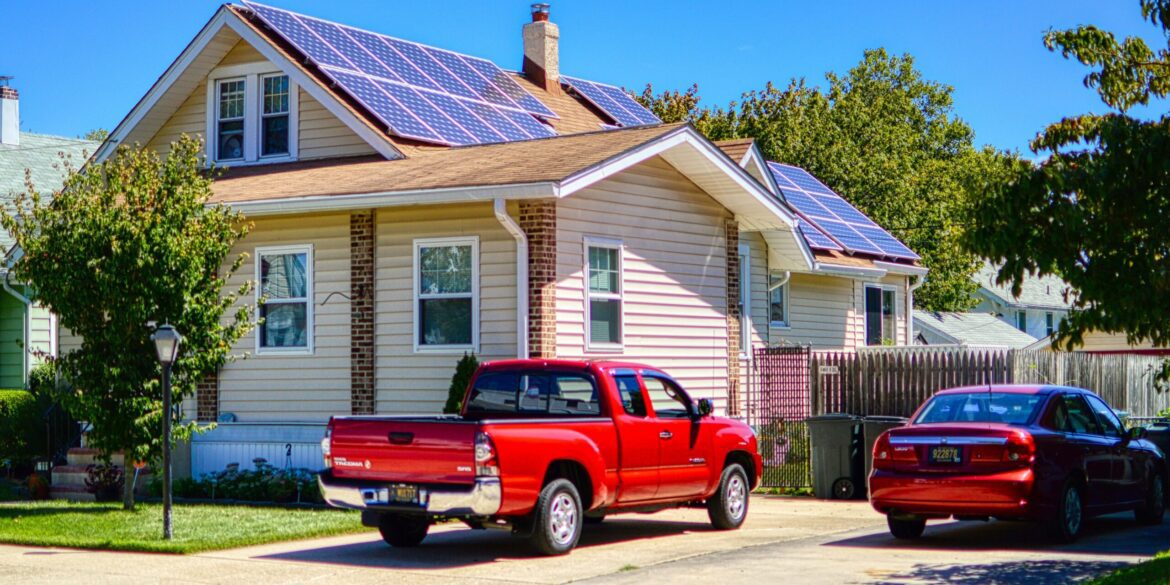With some of the nation’s most significant federal tax incentives for energy-efficient home improvements set to expire at the end of 2025, homeowners across the United States are being urged to begin eligible projects as soon as possible in order to secure thousands of dollars in potential savings. The incentives, introduced as part of recent federal energy and climate initiatives, are designed to accelerate the adoption of clean energy technologies and reduce household energy consumption. But under current law, upgrades must be installed and placed in service by December 31, 2025, to qualify for the credits.
Among the most important programs are the Residential Clean Energy Property Credit and the Energy Efficient Home Improvement Credit. Together, they cover a wide range of upgrades, from installing rooftop solar panels and geothermal heating systems to replacing drafty windows, adding insulation, and conducting professional energy audits. The Residential Clean Energy Property Credit allows homeowners to claim up to 30 percent of the cost of qualifying clean energy systems such as solar panels, geothermal systems, and fuel cells. Meanwhile, the Energy Efficient Home Improvement Credit permits homeowners to claim up to $3,200 in annual credits for projects like upgrading heat pumps, adding insulation, or installing energy-efficient windows and doors.
Read Also: https://toplistings.com/u-s-housing-market-shows-signs-of-stabilization-amid-rising-affordability/
The savings can be substantial. For example, the installation of a solar panel system costing $20,000 could generate a credit of $6,000 under the Residential Clean Energy program. A homeowner replacing old windows and adding attic insulation could qualify for thousands of dollars in credits under the Home Improvement program, provided the materials meet federally approved efficiency standards. In a time when energy costs remain a concern for households, these incentives offer a double benefit: reducing utility bills over the long term while providing immediate relief at tax time.
Experts caution, however, that not every upgrade automatically qualifies. To receive the credits, products must meet specific efficiency benchmarks, such as Energy Star certification or compliance with International Energy Conservation Code standards. Installation must also be carried out properly, with some projects requiring licensed contractors or certified energy auditors to ensure eligibility. Homeowners must carefully document receipts, permits, and the exact dates that installations were completed, since the Internal Revenue Service requires proof that improvements were in service by the deadline.
Industry professionals warn that the final months of 2025 could see a rush of demand that overwhelms contractors, suppliers, and installers. Many contractors already report increased inquiries from homeowners looking to complete projects before the deadline, and supply chains for equipment such as solar panels and high-efficiency heat pumps remain stretched. Scheduling delays could leave last-minute customers unable to complete their projects in time to claim the credits. Tax professionals advise homeowners to begin the planning process immediately, confirm eligibility requirements with vendors before making purchases, and retain qualified installers who understand the technical standards.
The approaching expiration also raises questions about whether Congress will extend the incentives. Lawmakers included the tax credits as part of broader clean energy legislation, but with political debates intensifying over spending priorities and climate policy, the future of these programs is uncertain. Some energy advocates argue that the credits have proven effective in accelerating adoption of sustainable technologies and should be extended to continue progress toward climate goals. Others contend that temporary deadlines help spur action and that continued subsidies must be balanced against budgetary concerns. For homeowners, however, the uncertainty means acting now is the safest course of action to avoid missing out.
The impact of these credits extends beyond individual households. Analysts note that they have also stimulated growth in the clean energy and home improvement industries, driving demand for solar companies, HVAC specialists, insulation contractors, and window and door manufacturers. Local economies benefit from the increased activity, and the jobs created by energy retrofits align with broader goals of fostering green employment. As the deadline approaches, businesses in these sectors are preparing for a busy final quarter of 2025, with many expecting record levels of activity as homeowners rush to qualify.
For first-time participants, the process can feel complex. Unlike standard tax deductions, these credits are highly specific about which products and installations qualify. For instance, not all heat pumps or windows meet the required efficiency thresholds, and certain items, such as biomass stoves or fuel cells, are eligible only under strict conditions. Tax preparers encourage homeowners to consult both the IRS guidelines and reputable resources before making purchases. Failure to comply with eligibility rules could mean losing out on thousands of dollars in potential credits.
For those able to act quickly, however, the benefits are clear. A homeowner who installs a qualifying geothermal system, replaces inefficient windows, and upgrades insulation in 2025 could save thousands of dollars in federal tax liability while reducing long-term household energy costs. In addition to financial incentives, many participants view the improvements as an investment in comfort and resilience, reducing exposure to volatile energy prices and enhancing property value.
As the December 31, 2025 deadline draws nearer, the message from experts, contractors, and tax professionals is consistent: do not delay. The credits have created a rare opportunity to make significant home upgrades at a lower net cost, but the window is closing quickly. For households considering solar panels, heat pumps, or energy-efficient retrofits, the time to act is now, before demand surges and the ability to secure qualified labor and materials becomes more difficult.
The final months of 2025 are likely to bring a surge in activity across the country as homeowners move to secure their projects. Whether Congress chooses to extend the programs or allow them to expire, the current rules are clear. To claim the savings, upgrades must be in place and operational before year’s end. For families balancing tight budgets against high energy costs, this may be the best opportunity in years to make lasting improvements with help from federal incentives.

